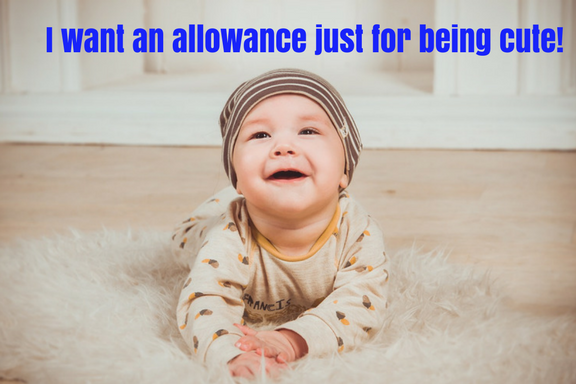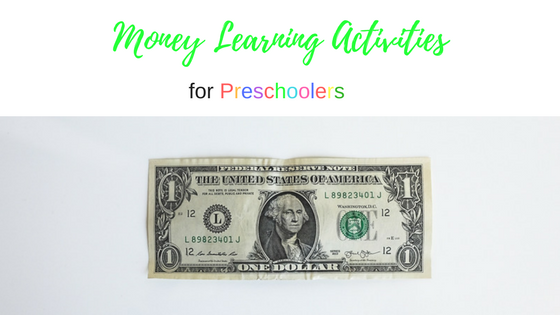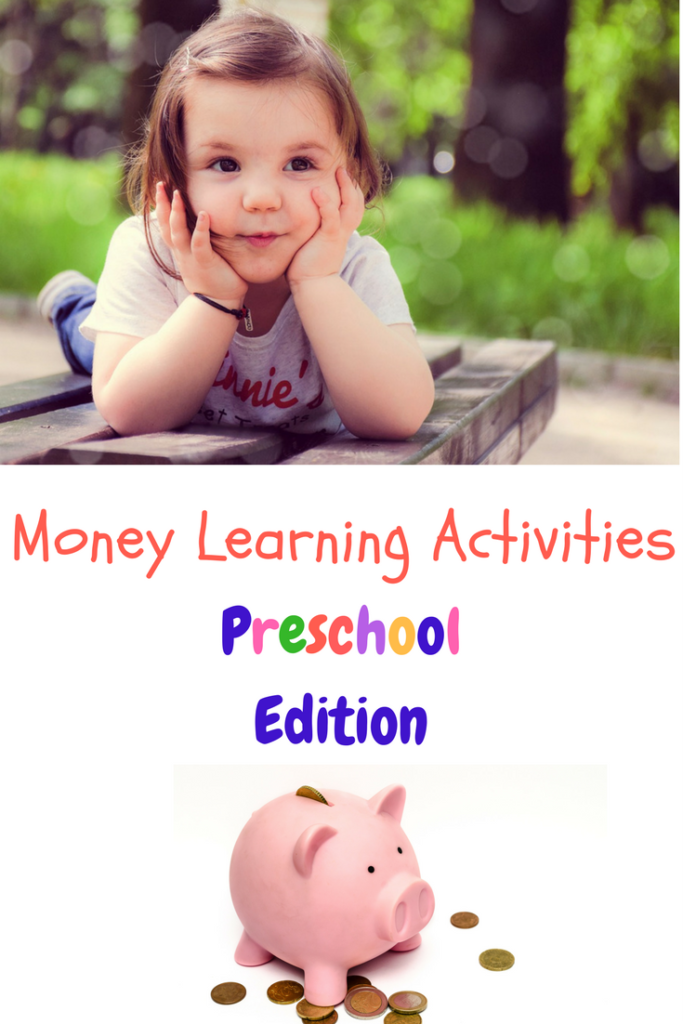When witnessing the intelligence of our little children today, they are becoming far more advanced than we could ever imagine. One area I want to encourage parents to put a little emphasis on is money management at a young age. By young age, I am referring to our preschoolers between the ages of 2 ½ and 5. This is an active process between the child and their parent that should be developed over time. Below are money learning activities for preschoolers that you are age appropriate and effective. We hope that starting the conversation about money early will help your child be able to responsibly manage and save their money by the time they finish high school.
MONEY LEARNING ACTIVITIES FOR PRESCHOOLERS
• With Hard Work You’ll Earn
Teaching children responsibility can be fun and rewarding for him or her. Offer your child an allowance for good habits. Figure out what activity will make the most sense to compensate. For example, if you offered your child an allowance each time they picked up their toys, they are going to be rich in no time. Try offering the allowance if the child cleans their room 5 out of the 7 days. At this age, the only perception they will have of money is the one you create for them. A small allowance not to exceed a $1 is appropriate for this age group.
• Where Does the Money Go
The child needs direction on where they should store their earnings. Otherwise, they will just put the money in their pockets or lay it down somewhere and leave it unattended to go and play. Start encouraging the habit of storing their valuables in a safe place. One of our favorite baby shower gifts was a piggy bank (what we called them back in the day). These banks come in all kinds of colors, shapes, sizes, and some may feature your child’s favorite characters as I saw a Frozen one the other day. Sharing with them where their money should go is a great habit to help them adopt. Give them their earnings in change so that they can shake the bank and have a little fun with it too.
• Persistence Offers More
When the child understands the idea of basic counting, it is important to explain the benefits of saving. Tell the child that they can buy any of their tangible wants if they have enough money. You probably already do this when you are at the store and have that little one begging, give me give me for every little want in view. Also, share with your child that when you continue to save, you will earn more money just for not touching it. Tell them that it is magic and that is one reason why mommy and daddy save. Give them an extra $1 at the end of the month. They will learn the reality of what interest pays out when they are older. However, our money learning activities for preschoolers gets the job done by introducing the concept to their mind and motivates them to keep up with it.
• Building the Vocabulary
Flashcards are fun and they’re an educational way to introduce the topic of money. They are colorful and are effective for any age. I love these language builders because, they introduce children to money terms that most adolescents will not hear or learn about until they are older. They will learn terms such as producer and annuities in a way that they can understand.
Try Boyce Watkins Fun Financial Flash Cards
•Money Learning Apps**
I would not be surprised if your 2-year-old could access and navigate your phone better than you can. My baby is only 9 months old and if my phone is unlocked, she can get to Youtube and find her favorite video. All children consume information differently, so using an app on your phone or tablet could provide an interactive means for your child to learn. Two apps you may want to consider:
–Counting Money and Coins
-Amazing Coin-Kids Money Learning
• Cha-Ching: Use a Cash Register **
My heart melts every time I am in the grocery store and I see a kid pushing a mini shopping cart. I cannot wait until my baby is old enough for the fun. Companies that offer these shopping carts making shopping enjoyable for both the parent and the child. Like mom and dad, the child wants to push the buggy and not sit in it. And, when you get to the register, the child lights up at the opportunity to give money to the cashier. Help them build upon this experience in learning about money with a cash register. At home, you can practice the exchange of money. This allows the child to have confidence in exchanging the correct tender. Of course, they will probably not go on any shopping adventures alone, but at least you will have a cool little money manager on your team.

Take note that all of the money learning activities for preschoolers can be completed in the convenience of your home. They are also affordable and the most you will spend is your time. If you start early, your child will reap the benefits by the time they are ready to enter into the real world.
**Age appropriate for children between the ages of 4 and 5.
Did you start the conversation about money with your children early? Share with us any money learning activities for preschoolers you found helpful.
You might enjoy 8 Simple Steps to Creating the Budget that Works!





It’s never too soon to get kids learning about money! I work in accounting and finance during the day and I have always been shocked at how little attention is given to financial education. Most schools don’t even touch the issue, even though it is highly relevant and can benefit anyone.
Right, it should be included in the curriculum. I can’t help but think of the student loan crisis and how it might be less of a problem if our children were more financially fit with their knowledge about money.
Great advice… I think it’s so important that children learn about finance and accountability from a young age. It can only serve them well in future. Whenever I’m at the grocery store, I always encourage my four year old daughter to interact with the cashier, and get involved with the process of paying for our shopping. We love to use piggy banks too!
That’s awesome. My little is still an infant but your testimony is proof they can learn in their pre-kinder years!